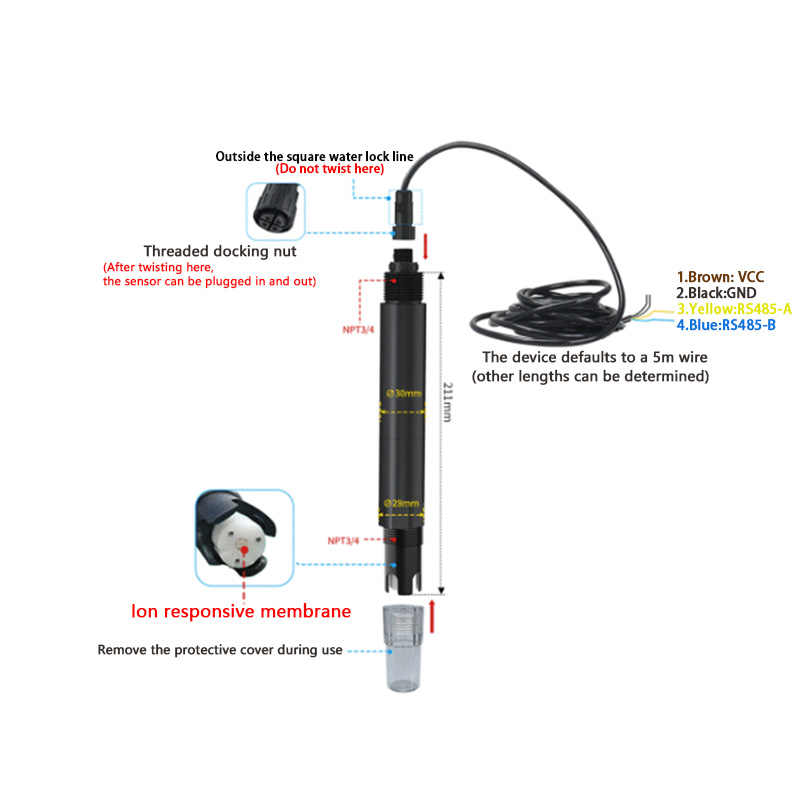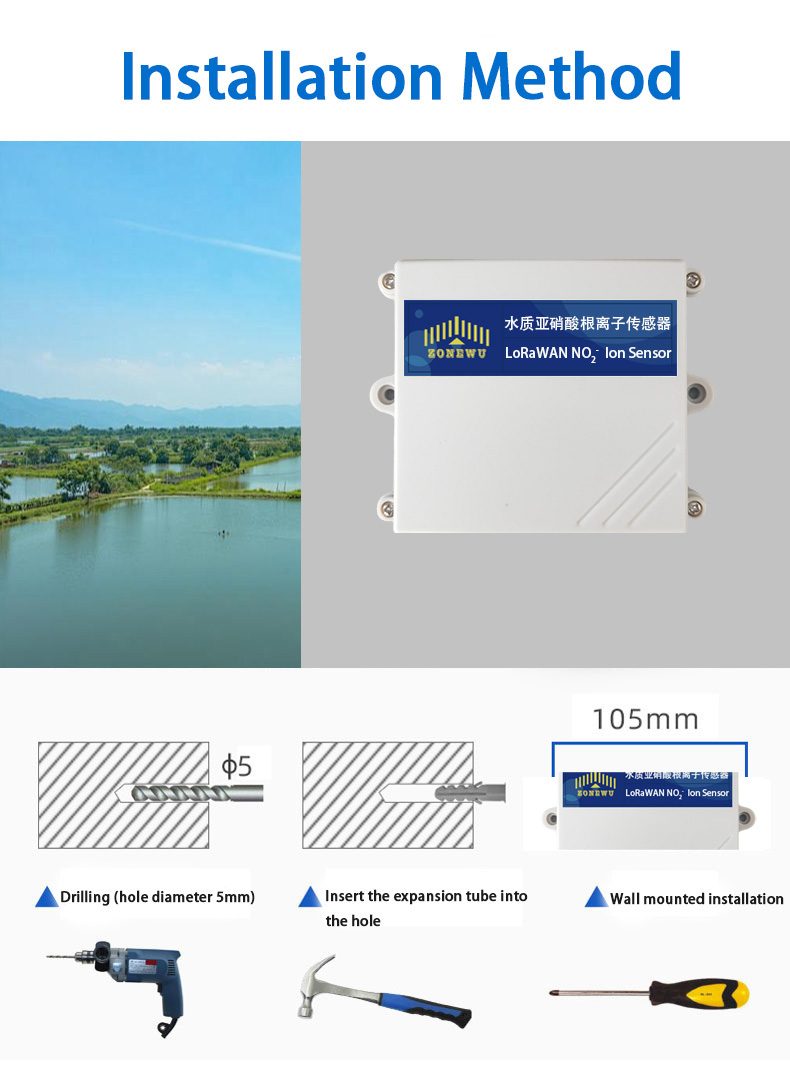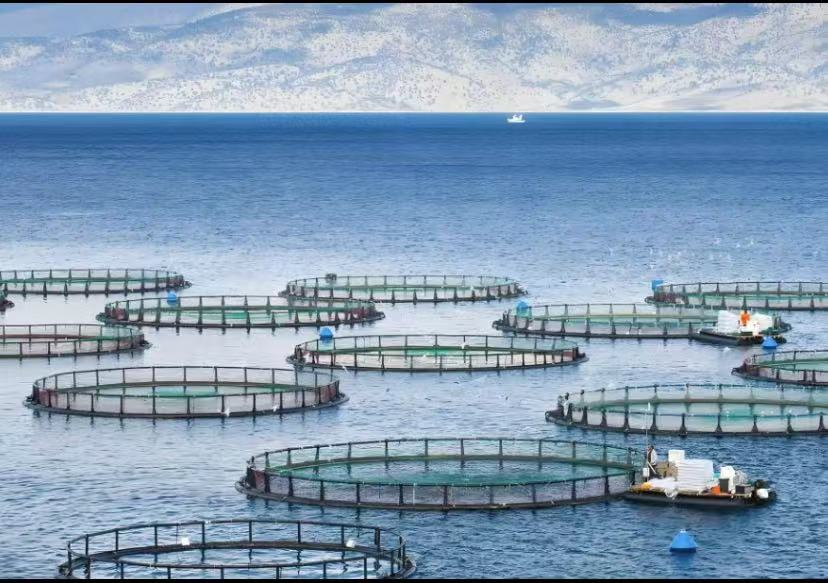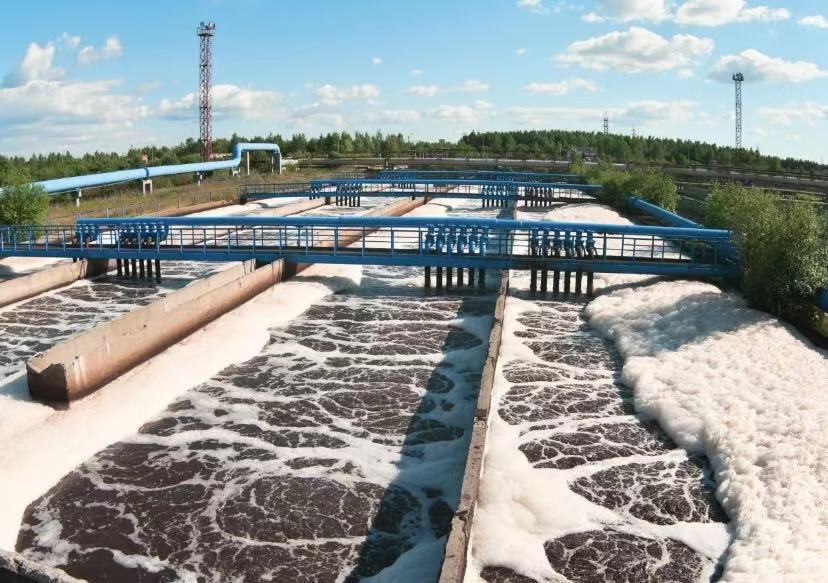xiamen ZoneWU LoRaWAN Water Quality NO2- Ion Sensor, which can collect, monitor and transmit data, is a low-power wireless Internet of Things sensor. It is resistant to light interference, automatic temperature compensation, long-diNOstance wireless transmission according to the LoRaWAN protocol, and suitable for long-term online detection.
Product Model :
LW116-NO2Power Supply Mode :
Battery or External DCFrequency :
CN470/IN865/EU868/RU864/US915/AU915/ KR920/AS923-1&2&3&4MAC Version :
LoRaWAN 1.0.3Mode :
OTAA Class A/CWeight :
150gSmart Wireless LoRaWAN Water Quality NO2- Ion Sensor
xiamen ZoneWu LoRaWAN Water Quality NO2- Ion Sensor can wirelessly measure the content of nitric root ions in water.
xiamen ZoneWu LoRaWAN water Quality NO2- Ion Sensor Features:
This sensor can adjust the measurement according to temperature changes, no matter whether it is hot or cold, it is not affected by temperature, and the measured data is more reliable.
Because of the automatic temperature compensation function, it is not afraid of the surrounding environment changing, and can work stably in different environments.
Compared with those that do not have this function, it has a much higher measurement accuracy and can more accurately measure ion concentration.
It and LoRaWAN collector connection is very simple, with the aviation connector on the line, the connector connection is stable, signal transmission is stable.
After being connected, it can communicate wirelessly, without wires, and the data can be transmitted quickly, which is convenient and efficient.
Whether industrial waste water meets the standard, whether surface water is dry, whether drinking water can be safe to drink, how the sea water is, and controlling ion concentration in industrial production can be used to test and analyze.
Product Parameters
| Power Supply | 12/24VDC |
| Weight | 150g |
| Operating Temperature | 0~40℃ |
| Measuring Range |
0-100mg/L, 0-1000mg/L(default) Ionic sensors are more susceptible to interference from other ions in the water and can easily cause membrane head failure. Please purchase with caution ! |
| Measurement Error | ±5%FS(25℃) |
| Resolution Ratio |
0-100mg/L: 0.01mg/L 0-1000 mg/L :0.1mg/L |
| Temperature measurement range |
0~50℃,Resolution Ratio:0.1℃ (When manually compensating for temperature, it is set to 25 ℃ by default.) |
| Electrode usage cycle | Normal use for 2 years |
| Pressurization | 0.6Mpa |
|
Transmitter Line length |
Default 5m (other lengths can be customized) |
| Frequency |
CN470/IN865/EU868/RU864/US915/AU915/ KR920/AS923-1&2&3&4 |
| Mode | OTAA Class A |
| Reporting cycle | 60min(Default ) |
| Battery Life |
≤3 years (Depending on the reporting cycle) Note: Due to the high power consumption of Ion sensor, it is not recommended to use shortcycle data reporting. |
|
Communication Protocol Equipment information (Reference) |
LoRaWAN,LoRa TDMA Networking AppEUI:0000000000000001 DevEUI:aaaa202404150001 AppKey:00001111222233334444555566667777 MAC Version:LoRaWAN 1.0.3 |
Product Applications
1. High sensitivity: can be sensitive to very small nitrite ion concentration changes.
2. Accurate measurement: giving high-precision nitrite ion content data.
3. Efficient response: nitrite detection results can be output in a short time.
4. Strong anti-interference: effectively eliminate the interference of other substances on the detection.
5. Good stability: long-term maintenance of stable detection performance in complex environments.
6. Wide adaptability: can work with a variety of water quality monitoring equipment.

Magnesium Ion Transmitter Size and Installation
1.Submerged installation: The lead wire of the equipment is passed through
the waterproof pipe, and the 3/4 thread on the top of the equipment is connected
with the 3/4 thread of the waterproof pipe with raw material tape.Make sure that
the top of the equipment and the equipment lines are free of water.
2. Pipe Installation: Connect to the pipe through the 3/4 thread of the device.
Detailed Images


Common knowledge of NO2- Ion
What are the applications of nitric root ion sensors in the medical field
In the medical field, nitric root ion sensors can be used to detect the concentration of nitric root in human body fluids (such as blood, urine). Doctors use the data to help diagnose conditions such as electrolyte disturbances, renal disease and high blood pressure, which are often linked to abnormal nitric root levels.
What role can nitric root ion sensor play in environmental monitoring
In environmental monitoring, it can be used to detect the content of nitric root ions in soil and water. For example, in agriculture, knowing the concentration of nitric root ions in the soil can determine the degree of salinization of the soil, helping farmers to rationally select crop varieties and irrigation methods. In water quality monitoring, nitric root ion concentration is one of the indicators to assess water quality, helping to determine whether the water source is contaminated or suitable for drinking, industrial use, etc.
What are the applications of nitric root ion sensors in industrial production
In industrial production, such as in the chemical industry, monitoring the nitric root ion concentration in the reaction system or production water can ensure the stability of the production process and product quality, preventing abnormal nitric root ion concentration from affecting the chemical reaction process or causing equipment corrosion. In the power industry, the content of nitric root ions in boiler water is monitored to avoid causing boiler pipe fouling and corrosion due to excessive sodium, ensuring the safe operation of power equipment.
Can nitric root ion sensors be used in the food industry
Yes. In the food industry, nitric root ion sensors are used to detect salt content in food, It helps food manufacturers to precisely control the nitric root content of products to meet the needs of different consumers for low-salt or conventional salt-containing foods, while ensuring the stability of food flavor and quality, and meeting the requirements of relevant food nutrition labels and health standards.
Application Scenarios

Aquaculture
Monitor the calcium ion concentration of aquaculture bodies to ensure the health of aquaculture organisms and the stability of water quality.

Seawater Monitoring
Monitoring the concentration of calcium ions in seawater is conducive to marine ecological research and the regulation of seawater aquaculture.

Industrial Wastewater
Monitoring the concentration of calcium ions in industrial wastewater helps with wastewater treatment and achieving compliance with discharge standards.
A:Yes,we can provide you with OEM services and design housings and logos.
3.DO you offer free samples?
A:Sorry,we don't offer free samples.After ordering in bulk,we will deduct the sample fee from the second order.
Why Choose ZONEWU